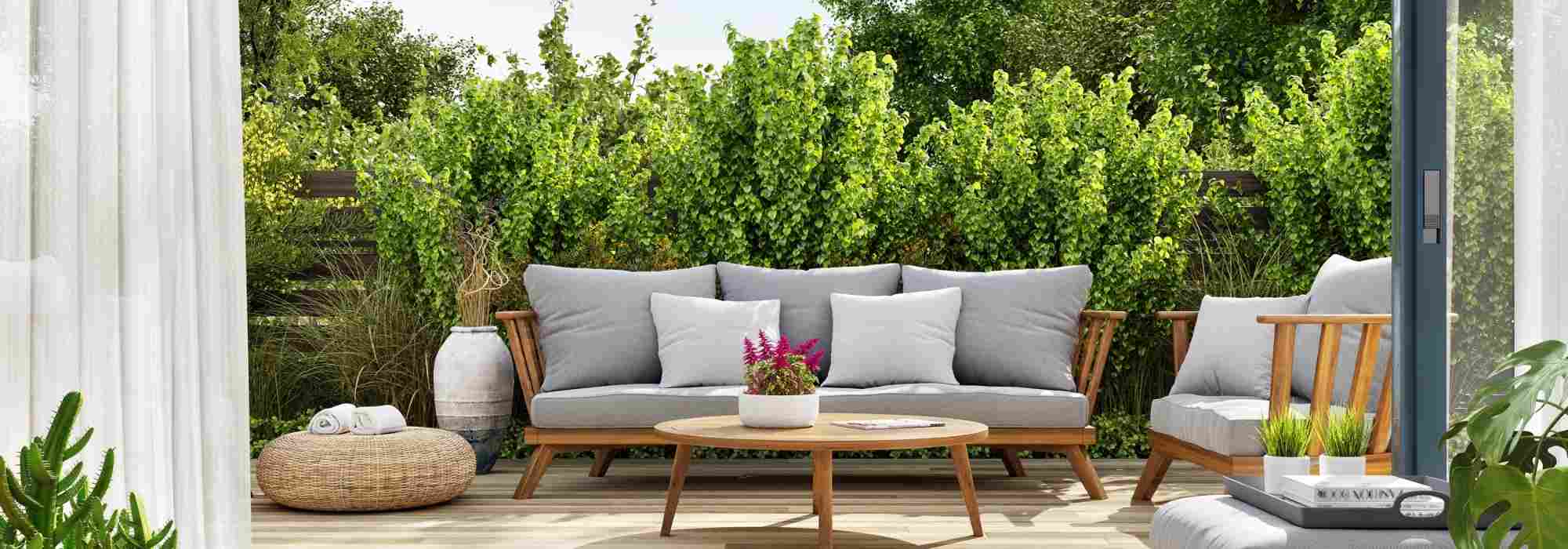
Blocking the wind on a terrace: the plants you need!
How to effectively protect yourself from winds using suitable plants?
Contents
The wind can sometimes spoil the enjoyment of your terrace or balcony, especially if you live in the Rhône Valley or by the sea. To avoid this type of inconvenience, you can insert a screen that will act as a filter, but it is often useful to install some dense and non-brittle plants that will serve as a natural windbreak. By choosing sturdy evergreen bushes that tolerate growing in large pots, you will benefit from an additional little green cocoon, which is quite pleasant. Just take special care with watering, which will be more frequent in pots than in the ground.
So, which plants should you consider to create this essential windbreak on a raised terrace, rooftop terrace, or in areas particularly exposed to the wind? Let’s explore the ideal plants that grow quickly and are truly effective in sheltering you from the wind and drafts on your terrace.
Eleagnus ebbingei
Also known as Chalef, Eleagnus is one of those magical bushes for our wind-exposed terrace: it features evergreen, compact foliage, with a stunning coloration that can be almost shimmering, often variegated, and always very ornamental, transitioning from yellow-green to olive green depending on the cultivars. A particularly well-ramified bush, Eleagnus ebbingei is a must for terraces and large balconies exposed to the wind, as it eventually becomes very bushy with the pruning you provide (especially formative pruning at the beginning of planting). It is often found by the sea, used as a garden hedge, but it adapts very well to pot cultivation, making it our number one bush in this selection. An East, West, or South exposure suits it perfectly, as this bush enjoys sun and partial shade. With rapid growth, it quickly forms a beautiful screen and provides good protection against the wind. Measuring about 2 m high (you can maintain it at this height), it has the advantage of tolerating drought well, even in pots.
Among the beautiful cultivars: Eleagnus ebbingei ‘Compacta’ and ‘Maryline’ variegated with yellow.

The species type Eleagnus ebbingei and the cultivar ‘Maryline’
→ Discover Virginie’s article How to Choose Your Eleagnus and our complete sheet Eleagnus: planting, pruning, maintenance tips
Portugal Laurel
Here is another bush particularly effective against the wind: the Prunus lusitanica. While it is mainly found in hedges, or even trained as a tree, often reaching considerable heights, it can also be suitable for pot cultivation on a terrace, kept within its proportions, and serves as an excellent barrier against winds.
Native to the Iberian Peninsula, the Portuguese laurel has a very beautiful evergreen foliage, oblong in shape, with a crenate margin, dark green and glaucous on the underside. Its remarkable density gives it less wind resistance. If you prune it heavily, you will miss out on its lovely and long creamy melliferous flowering in June, which is another of its assets. A well-sunny exposure is favourable for Prunus lusitanica, making it the ideal windbreak bush for a south-facing terrace. However, it grows more slowly than Eleagnus, but once established, it forms a beautiful robust screen, perfectly hardy. Depending on the cultivar you choose, you will enhance your terrace with variegated or light to dark green foliage. It also adapts well to drought, a boon for a mineral terrace and increasingly hot summers…
Among the beautiful cultivars: Prunus lusitanica ‘Brenelia’ is a variety we recommend for its modest dimensions (2.50 m in height), its upright habit, and its reddish branches.
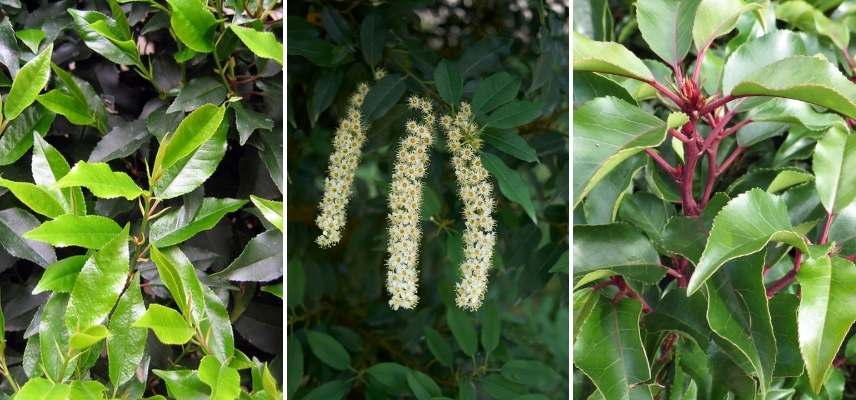
Foliage of Prunus lusitanica (© R. Hartnup), creamy flowering in beautiful long clusters, and variety ‘Brenelia’ on the right
→ Everything you need to know about Prunus lusitanica in our complete sheet.
Discover other Patios
View all →Available in 1 sizes
Available in 1 sizes
Available in 1 sizes
Available in 1 sizes
Available in 1 sizes
Available in 0 sizes
Available in 0 sizes
Available in 1 sizes
Available in 1 sizes
Available in 0 sizes
Photinia
This name may ring a bell and perhaps even frighten you a little? Yet, the Photinia is an excellent candidate to provide some respite for terraces and large balconies exposed to the winds. If you’ve seen it too often in housing estate hedges, discover it in a large pot on a terrace where it quickly forms, and this is its great strength, one of the green outdoor screens… but also pink or red during the bud burst period of new leaves in spring. The Photinia is indeed evergreen, but it has the particularity of offering a vibrant spring display, and sometimes in autumn as well. The leaves of the Photinia are larger than those of other bushes in this selection, giving your terrace a truly striking appearance compared to other wind-tolerant shrubs. Knowing that the Photinia is not afraid of pruning—allowing you to shape it as you wish—that it thrives in pots, and that it remains of medium size, it is a shrub not to be overlooked if you want to counter the wind on an urban terrace in particular. It will be useful on a sun-exposed terrace as this enhances its red hues, but also in partial shade.
Among the beautiful cultivars: Photinia fraseri ‘Pink Marble’, interesting for its pink hues during bud burst, turning to cream variegated with green.

Photinia ‘Pink Marble’ (© Leonora Enking) on the left. On the right, the flowering of the Photinia is quite attractive in spring.
Olearia solandri
If you live by the sea, on the Atlantic coastal fringe or around the Mediterranean, Olearia solandri is a plant that offers a refreshing change from the commonly seen bushes used to border windy terraces. This bush also has the advantage of being highly ramified. It provides a truly bushy habit that acts as a windbreak, along with a very pleasant visual appeal on a terrace, thanks to its foliage of fine narrow leaves gathered in bouquets and its rapid growth. The Olearia remains naturally bushy, forming a rather flexible and wild green screen, perfect for complementing other light plants on a bohemian terrace. Growing up to 2 m, its low hardiness means it is best suited for sunny or lightly shaded terraces in the milder regions of the country.
Among the beautiful cultivars: Olearia solandri ‘Aurea’ features a bright golden yellow colour, remaining modest in size. Surrounding a more rigid and silver Eleagnus, it creates a stunning contrast on the terrace.

The Olearia solandri ‘Aurea’ displays beautiful finesse and elegance on a terrace
Bamboo
Flexible plant par excellence, “bending but not breaking” as the saying goes, bamboo is also one of the options to seriously consider for a terrace that is very exposed to the winds, such as a rooftop terrace. It will be particularly suited to a contemporary or exotic atmosphere, bringing a beautiful verticality with its graphic canes.
To guide your choice, as the success of a bamboo in a pot requires some specific care, look for bamboo that truly thrives in pots and remains of a reasonable size. Otherwise, you will not only be protected from the wind… but also from light. Bamboo does not prune in height, so prefer the Fargesia, and those that stay below 2 m, such as Fargesia nitida ‘Vulcano’ or Fargesia Jiuzhaigou, or even Indocalamus latifolius, which is quite bushy, in a shaded terrace, and will remain smaller than its 3 m in open ground. Hardy, ornamental, and accepting both sun and shade, these bamboos will quickly protect you from the wind; it is their growth rate that makes them a major asset in this selection.
Among the beautiful cultivars: Fargesia murielae ‘Bimbo’ for its truly dwarf size, about 1 m in height, and Fargesia nitidia ‘Jiu’, with orange canes.

Fargesia murielae and Fargesia nitida ‘Jiu’
→ Our complete sheets on Bamboo, Fargesia: planting, caring for and Pleioblastus, dwarf bamboo
Nerium oleander
If there is one of the most spectacular bushes for protecting a terrace from the wind, it is certainly the Oleander! When you have the chance to live in a mild region (the Atlantic coast or the Mediterranean area), it is a dream choice to adorn a large balcony or a windy terrace with its evergreen foliage and long flowering period.
Oleanders (Nerium oleander) indeed possess the qualities for those residing in a region where frosts are almost non-existent: rapid growth, narrow superb foliage, dense, with a beautiful generally ash-green colour, a flexible habit, an ability to thrive in pots, and of course, a dazzling tubular corolla flowering generously from spring to autumn, often pink, sometimes even nearly white or tinged with peach. Cultivating in pots contains its vigour while providing sufficient protection from drafts. You should choose the most compact varieties from the multitude of cultivars available on the market, not exceeding 3 m, knowing that in a large pot, an Oleander will remain smaller.
Placed in the sun, or in light partial shade in the South, two or three large pots work wonders and will make an excellent windbreak; you can combine different flower colours, knowing that all harmonise perfectly with each other!
 The stunning Oleanders are perfect bushes to install on a terrace in a mild climate!
The stunning Oleanders are perfect bushes to install on a terrace in a mild climate!
→ Learn more in our complete guide Oleander, planting, pruning, and maintaining
Japanese Spindle Trees
Finally, among the essential bushes to counter wind gusts, resilient to many other adversities (pollution, cold, drought…), the Japanese spindles are a species not to be overlooked when designing your windy terrace.
Unlike the European spindle (Euonymous europeus) and the Chinese spindle (Euonymous fortunei), Japanese spindles are evergreen bushes. They are well-suited for pot cultivation and can be placed in either shade or full sun, depending on the cultivars. A wide range of varieties allows for the creation of a truly ornamental windbreak, as their small, glossy, dense foliage often features sumptuous bright variegations and an impressive palette of greens (from yellow to almost white, up to dark green). Remaining of medium size, they also tolerate pruning well, an additional asset for the terrace. Finally, and this is another great quality of the Japanese spindle, some varieties are more upright and graphic than others, making them suitable for a contemporary, classic, or even exotic terrace depending on the foliage hues. Their more rigid habit compared to other bushes pairs well with other evergreens or grasses, such as a grey Pittosporum in a mild climate, a potted conifer, or Carex for a textural contrast, or a laurel with larger foliage that will bring a beautiful spring flowering. The only small constraint with the Japanese spindle is that it grows quite slowly, so a tip: plant a mature bush to enjoy a windbreak effect more quickly!
Among the beautiful cultivars: Euonymus japonicus microphylla ‘Aureovariegatus’, Euonymous japonicus ‘Bravo’ edged in cream white, Euonymous japonicus ‘Aureus’ almost yellow, and for a natural verticality, the graphic ‘Benkomasaki‘.

Euonymus japonicus ‘Benkomasaki’ and ‘Bravo’
→ Learn more about spindle in our complete guide, and in our advice sheet Choosing a spindle.
- Subscribe!
- Contents



































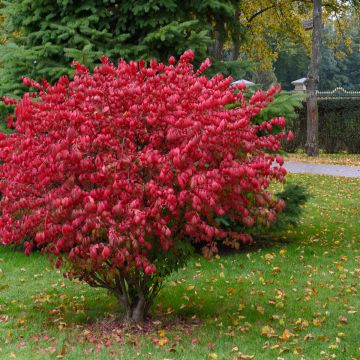

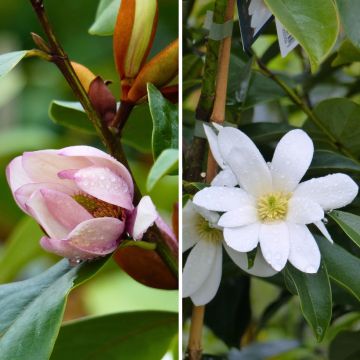

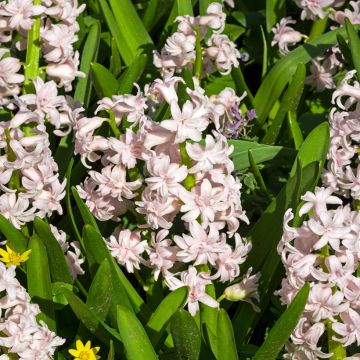
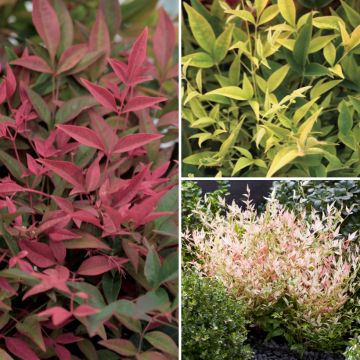
Comments